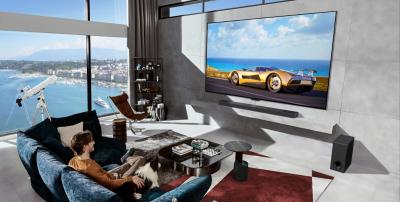Seoul's Kookmin University researchers concluded a clinical study to verify the impact of TV panels of sleep, measuring the levels of the sleep-inducing hormone melatonin in 40 adult men and women divided into groups watching the same content on either LCD or LG's WOLED TVs.
The researcher found that melatonin secretion fell 2.7% over two hours for the LCD group and it increased 8.1% in the OLED TV group. Melatonin rises in the evening to prepare the body for sleep, but the blue light emitted from displays disturbs the melatonin secretion as it confuses the body. As LCDs emit about twice as much blue light as OLEDs, it is not a surprise they have this effect on melatonin levels.
Prof. Kim Chang-wook, leading the research, says that in addition to minimizing the negative impact on melatonin secretion during viewing time, OLED TVs have been shown to be effective in maintaining viewers' healthy sleep patterns through greater activation of their parasympathetic nerves, which are responsible for feelings of comfort.
Excessive exposure to blue light has been linked to many health issues - including cancer, diabetes, heart disease, obesity and insomnia. Children, especially, have delicate retinas that are highly susceptible to the dangers of blue light. Researchers started looking into OLED's improved blue light emission over 10 years ago.
Last year, LG Display's OLED TV panels received a 'discomfort glare-free' verification from UL, a Circadian Friendly certification from TÜV Rheinland. LG's META (MLA) TV panels earned UL Solutions' Platinum eye safety rating and the UL Mark for low blue light. LG's OLEDs also received TÜV Rheinland's Eye Comfort Display certification (Samsung's AMOLED displays also received the same certification).



I imagine this would be even better if the TV panels used pure RGB instead of LG's ubiquitous "WRGB" (WOLED-CF) with that cold white pixel. RGB has such an "earthy" natural look to it, and Samsung was still making its RGB panel, I thought atlooked better than the LG (along with the RGB in smaller OLEDs, regular LED signs, and MLED. LG was nice in being able to create that pure white, like a B&W TV, but it obviously produces more blue.